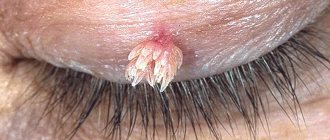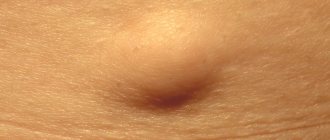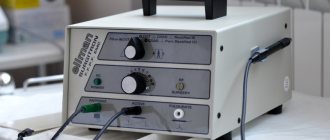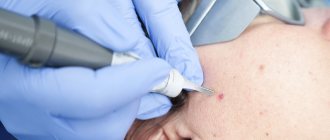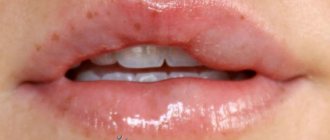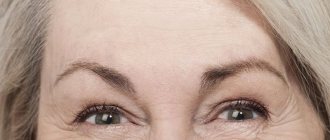15.04.2017
Onychomycosis is a fungal infectious disease that affects the fingernails and toenails. According to statistics, nail fungus is diagnosed in 20% of the population.
You can become infected in public places - in a bathhouse, sauna, swimming pool. Favorable conditions for the development of fungus are warmth and dampness.
Among the signs of the disease are:
- changes in the color, thickness and shape of the nail;
- the presence of yellow or dark stripes, spots on the nails;
- unpleasant smell of rot;
- peeling of the skin around the affected nails;
- the nail peels, crumbles, breaks.
The symptoms themselves are not dangerous, so many people do not consider it necessary to treat nail fungus, believing that everything will go away on its own. However, the disease must be treated because it is very contagious, makes the body susceptible to viruses and bacteria, and is fraught with complications. Fungal onychomycosis should be treated as early as possible.
After the doctor confirms the suspicions and makes a diagnosis, suitable medications and procedures will be prescribed to treat nail fungus. In very advanced stages, the nail will have to be removed.
Typically, removal is prescribed when the fungus has penetrated deep into the tissue and the medications cannot act through the nail plate. Medicines can be prescribed internally and externally. But sometimes treatment takes too long, then laser therapy is a more effective option.
For the procedure, different types of laser can be used, which differ in action and wavelength:
- erbium;
- neodymium;
- diode
Erbium laser for fungus
The erbium laser successfully breaks the stereotypes that laser treatment of nail fungus is a painful and unpleasant procedure. The erbium laser acts ablatively and thermally on the tissue of the nail plate, vaporizing the nail layer by layer.
There are no burns from such a laser; for its peculiarity, this method is even called a “cold” beam. The essence of the method is to remove the vessels that feed the mycelium.
The erbium beam carefully treats the nail plate, the work is carried out very precisely, including hard-to-reach places. To completely cure nail fungus, it is enough to undergo about 6 procedures.
A little about the problem of nail fungus
Nail fungus or onychomycosis is a contagious and quite dangerous disease that can lead to complete destruction of the nail.
People become infected with this disease in different ways - but these methods always involve immediate direct contact. The disease progresses quite quickly and, unfortunately, visible destruction of the nail is noticeable only when the mycelium has had time to grow greatly.
The first symptoms of the fungus are itching, burning, pain between the toes of the nails: it is in the skin that the fungus initially penetrates, only at an already advanced stage taking hold of the nail plate.
In the early stages, you can cope with the problem through medications, including local ones. But advanced fungus and extensive destruction of the nail plate can only be eliminated using radical methods. Such as laser. You may also be interested in information about how laser stretch mark removal occurs and what the cost of the procedures is.
Neodymium laser
It is considered the most popular procedure. The essence of the treatment is to heat the affected nail plate to 43-52 degrees, without injuring the skin.
The procedure is practically painless, there is no blood. Neodymium laser treatment for nail fungus is considered optimal among the 3 procedures due to its wavelength.
It is this that allows the beam to penetrate deep into the structure of the nail, destroying the mycelium. The heat emitted by the laser has an additional antibacterial and healing effect, cells regenerate faster. To completely undergo laser treatment for fungus, you need about 7 procedures.
Description and essence of the method
A laser is a source of specific electromagnetic waves coming in the form of ultra-thin beams. Thanks to their special structure, waves are able to penetrate any obstacle and destroy the desired target at any depth. Therefore, the laser is able to cope with nail fungus, even if the mycelium lies in deep layers - up to 7 mm.
The laser beam burns out the body of the parasitic mycelium completely, so this method of treatment is radical and extremely effective.
You may also be interested in information about whether laser resurfacing or chemical peeling is better.
The standard course of treatment lasts from a month to a month and a half, and includes, on average, 3-4 laser sessions. Sometimes less or more depending on the severity of the lesion. Sessions are not conducted daily: after each session, a period of time of at least a week is required so that the tissues have time to recover.
Video shows laser treatment for nail fungus:
We note the safety and harmlessness of this procedure. In addition, laser treatment is completely painless, which is also important.
It will also be useful for you to learn about what electrolysis or laser hair removal looks like and how it is performed.
Diode laser treatment
This type of laser against nail fungus has been used for a long time. The essence of the method is the temperature effect on the nails. During the procedure, tissues affected by the fungus evaporate, while healthy ones are not affected.
At high blood temperatures, the procedure may be accompanied by a slight burning sensation and tingling sensation. Some doctors consider the technique outdated, arguing that treatment of onychomycosis with an erbium-type laser is faster. However, the price of a diode will be cheaper.
How many procedures will be needed to get rid of the fungus depends on the location of the fungi and the degree of damage to the nail. In general, even with advanced nail fungus, treatment will take no more than 10 procedures. During treatment, the nail plate is removed, and a new nail will grow in a few months.
How does the procedure work?
First you need to choose a highly qualified specialist. An incorrectly performed procedure can result in big problems.
Important: pay attention to the reputation of the cosmetology clinic. An establishment that has been building its image for years usually selects its staff very strictly.
Before starting treatment, the following tests are required:
- general blood analysis;
- blood test for biochemistry;
- blood test for infections.
A week before the procedure, you should stop using antifungal medications. Nail polish must be removed 48 hours before treatment. On the eve of the procedure, you should steam them in hot water with the addition of baking soda and cut and file them as short as possible. This concludes the preparatory stages.
Treatment of toenail fungus with a laser takes 20 minutes and proceeds in the following order:
- The patient is wearing safety glasses to protect their eyes from laser exposure.
- The affected nail plate is treated with an antiseptic, after which a special gel is applied to it.
- Using a laser device with low-intensity radiation, the affected nail is exposed.
- Remove the previously applied gel.
For the procedure, the following can be used: diode laser and neodymium lasers, which burn out the fungal infection, or an erbium laser using the cold method.
The duration of laser exposure is 10-15 minutes, depending on the degree of damage. It may take up to 10 procedures to completely cure the fungus.
After treatment, the patient is additionally asked to disinfect the socks and shoes he wore to the appointment. This necessary measure eliminates the risk of re-infection immediately after treatment.
Nail removal is carried out according to the same scheme, the difference is in the intensity of laser radiation. When removed, it is significantly higher. The affected plate is painlessly removed layer by layer, and the nail bed is cleaned under the influence of high temperatures. The recovery period after the procedure takes 2 days. 3 months after treatment, the nail plate is completely replaced with a new one and the results of the treatment can be judged.
Be careful when choosing a laser
Among the offers of various clinics, you can also find those that offer treatment of nail fungus with a low-intensity laser. If, in addition, the advertisement says that after such a procedure patients recover completely, this is a deception. Low-level laser can only eliminate symptoms.
More precisely, the procedure will help improve tissue metabolism and start the process of nail regeneration. Therefore, to the question - is it possible to cure fungus with a low-intensity laser - we can confidently say that it is not possible - after a while the fungus will return.
Compared to the use of medications and surgical treatment, laser procedures are safer and have no side effects. Therefore, laser treatment of nail fungus can be prescribed to older people and children. The following reasons may be contraindications:
- diabetes mellitus, epilepsy, oncology;
- pregnancy and breastfeeding;
- the presence of infectious, viral, chronic diseases in the acute stage;
- visiting a solarium less than 14 days before the procedure;
- taking anticoagulants, immunosuppressants, etc.
Contraindications
The procedure has a number of limitations, and we will get acquainted with these limitations later. So, you cannot eliminate nail fungus using a laser in the following cases:
- for infectious and inflammatory diseases currently occurring in the patient’s body;
- with a history of diabetes mellitus;
- for some neurological pathologies, for example, epilepsy;
- for existing skin problems, rashes, especially in acute form;
- for oncology;
- if you have recently had surgery to remove any internal organ;
- during pregnancy and breastfeeding.
In addition to the above, the procedure is refused if:
- the patient took anticoagulants, tetracycline drugs, immunosuppressants less than two weeks before laser intervention;
- the patient recently visited a solarium and sunbathed in the sun;
- I recently had a chemical peel procedure.
But what harm there is from laser hair removal and why cosmetologists prescribe such a procedure can be seen in this video.
Advantages and disadvantages of laser in the treatment of nail fungus
Like any treatment method, laser has its pros and cons. There are many more positive aspects. This includes the vastness of the technique, which minimizes the risk of infection.
The painlessness of the procedure is also of great importance. Unlike mechanical nail removal, anesthesia is not needed, which means there will be no allergic reaction and a long rehabilitation period.
An important advantage of the laser is the absence of side effects on internal organs, as is the case with systemic drugs that destroy the liver, kidneys, etc.
As for the effectiveness of the laser, 96% of patients experience improvements after 2–3 procedures, 95% of patients are cured of the fungus within six months, and 3% forget about the fungus after additional procedures. The speed of the procedure cannot be ignored - one session will take less than half an hour.
As for the disadvantages of laser therapy, for the most part they are observed if the treatment is carried out by an incompetent doctor. Then burns on the skin are possible, and the infection can spread to healthy nails.
If treated incorrectly, the nail plate becomes deformed, scars and cicatrices appear, and nail growth stops. This is why it is so important to contact an experienced doctor rather than choosing the lowest cost procedures.
Let's talk more about the procedure
The essence of the method is the passage of ultra-thin electromagnetic waves through the human body. The doctor adjusts the required wave depth on the laser system. Therefore, the laser removes the fungus even if its mycelium is deep - up to 7 mm.
Most often, one session of laser therapy is not enough to completely get rid of the fungus. The patient usually needs 3-4 procedures. The duration of treatment is up to one and a half months. This duration is due to the fact that sessions cannot be carried out every day. The top layer of epithelium must regenerate between sessions.
The undoubted advantages of this procedure: safety, painlessness and absolute harmlessness. This method is not accompanied by a violation of the integrity of the skin, and therefore there is no risk of infection. And the extremely low dose of radiation when removing nail fungus with a laser eliminates the possibility of disruption of the body’s functioning and the appearance of tumors.
Preparing for laser nail treatment
Before making an appointment for laser nail removal, you need to be examined by a dermatologist and be tested for the pathogen and its sensitivity to antifungal drugs. Before the test, you need to stop taking medications about a week, remove nail polish 2 days before the procedure, and do not cut your nails the day before the test.
It is also worth preparing for the laser procedure - the evening before the procedure, you need to steam your leg for 20 minutes in a basin where 5 liters of hot water are mixed with 1 tbsp. soda and 50 g of grated laundry soap.
After this, the nails are cut short and treated with a file (the tools are disinfected or disposable ones are used). On the day of the procedure, the nails are not treated with anything. Laser therapy is carried out in sessions with breaks of 1-2 weeks. The entire course of treatment may take about six months.
During treatment, doctors recommend wearing loose shoes, changing socks regularly (if you have fungus on your toenails), and keeping your extremities dry. Nail care should be carried out only with tools that are well disinfected.
Main stages
Laser removal of nail fungus is carried out as follows:
- The doctor treats the leg with an antiseptic.
- Applies gel.
- Having chosen the appropriate removal technique, the doctor takes the laser and applies it to the finger for 10-20 minutes.
- And removes the remaining gel from the leg.
After the procedure, the doctor may suggest ozone disinfection of socks and shoes. It is best to agree to this procedure, as it prevents re-infection with the fungus.
Laser treatment method
The laser treatment method for fungal nail infections involves completely eliminating the cause of the disease. Laser treatment eliminates the source of the problem safely and quickly. An ultra-precise laser sterilizes the entire thickness of the nail plate and disinfects the skin under the nail. The laser method for treating fungal infections lasts twenty minutes. During the process, the laser penetrates deep into the nail and eliminates the fungus. After the procedure for eliminating the fungal infection is completed, the nail begins to grow healthy. However, do not expect quick results; the laser method requires some rehabilitation. After laser treatment of a fungal infection, the nail will take some time to grow back. Laser destruction of the fungal infection will be repeated until the problem is completely eliminated. The method is effective and safe. The reliable laser does not cause any harm to health. The main thing in this matter is an experienced doctor and clinic. You need to choose a medical institution by reading reviews about it and talking with a doctor.
What do you need to know about this disease?
Basic moments.
- The possibility of becoming infected with a fungus increases with a person's age. Elderly people who have reduced protective functions of the body are most often exposed to infection.
- Statistics have established that every 10 years of life, the likelihood of having fungus on the nail plates increases by 2 times.
- Most often men suffer from onychomycosis, but they go to the doctor for treatment 2 times less often.
Men are more likely to suffer from this problem - For women, the fungus brings more psychological and physiological discomfort.
- Most often, infection occurs from a sick family member.
- Onychomycosis is a progressive disease. If left untreated, it can make others sick.
Onychomycosis can develop - Onychomycosis does not go away on its own. After the fungus enters the tissue of the nail plate, it begins to destroy the hard shell of the nail, and then the tissue around the nail.
- Advanced stages lead to the loss of the entire nail.
- In very advanced stages, this disease causes allergic reactions and intoxication of the entire body. There may even be damage to internal organs.
Possible allergies and intoxication
Indications
Laser treatment of mycosis is carried out in the clinic by a specialist who will fully prepare the patient for this procedure and tell you how to maintain the results of the procedure so as not to become infected again.
Indications for using laser are:
- extensive foci of fungus;
- ineffectiveness of conservative treatment;
- inability to use local antifungal drugs;
- allergic reactions to drugs;
- severe damage to the nail plates and matrix on the hands and feet.
Benefits of laser therapy
The list of disadvantages in the fight against onychomycosis with medications is extensive. This includes emerging hypersensitivity to many substances, dysfunction of the liver and kidneys, decreased immunity and weakening of the entire body.
In addition, even the most effective cream or nail polish does not penetrate deep enough. This is not always enough to destroy microorganisms, so cases of relapse are frequent.
Laser treatment will help restore healthy nails
To prevent this from happening, it is recommended to resort to laser therapy.
This treatment procedure has a number of significant advantages:
- complete absence of unpleasant sensations during the session and after. There is no need for anesthesia, so harm to the body is excluded;
- the risk of infection is minimal - this method is better than simple hardware cleaning;
- nail removal is not required - after the procedure it will grow normally and will not bend, as after surgery;
- the laser acts exclusively on parasite spores, healthy tissue will not be affected;
- Only 3-4 sessions (standard course) are needed to destroy microorganisms. The duration of drug therapy ranges from 10 days to many months. This duration negatively affects the condition of internal organs;
- There is no rehabilitation period. The patient just needs to follow the doctor’s instructions and minimal preventive measures.
A laser treatment session lasts about half an hour. It is recommended to maintain an interval of several weeks between procedures.
This is how a laser therapy session works
Remember that it is necessary to choose a high-quality clinic and a specialist with experience in performing such operations. There should be sterile cleanliness around. If something doesn’t suit you, you have every right to refuse further stay in this place - health is more important. After all, lack of compliance with sanitary conditions is the shortest path to exacerbation or relapse of mycosis.
Possible complications
Problems during or after a session are rarely reported. If you look at real patient reviews, you can find confirmation of this.
The occurrence of complications is mainly due to the following reasons:
- advanced form of onychomycosis;
- insufficient number of procedures;
- individual characteristics of the patient;
- refusal or poor compliance with preventive measures.
The number of positive responses is many times greater than the negative comments from both patients and doctors.



